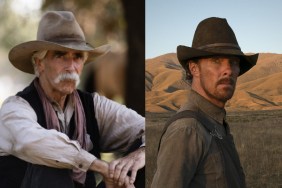
Thanks to the infamous Hays Code (the movie industry’s self-censorship system that was in place from 1930 until 1968, which I have previously written about), the kibosh was formally put on all films that had raunchier humor, nudity, themes of sex, and homosexual characters. As a result, movies cleaned up, the boobs went back into the dresses, and gay characters became kind of coded and “hidden” within the movies you went to see. The 1930s and 1940s are a time of sweeping gayness under the rug in movies. There could still be “sissy” characters, but they were just weirdos and funny sidekicks.
Actors and filmmakers were, however, savvy to the code, and were still interested in including queer characters in their films, so they came up with an unwritten “code” for depicting their gay characters. Luckily, the Hollywood censors were a bit clueless, and film writers, directors, and actors were all able to get away with all kinds of gay characters. I encourage you to watch 1941’s The Maltese Falcon at some point. In it, Peter Lorre plays an unctuous little weirdo who is clearly a gay man. Lorre and director John Huston introduced the character holding a cane. In his first scene, Lorre holds the handle of the cane up to his lips in a bizarrely sexual fashion.

Or maybe look to Alfred Hitchcock’s 1940 film Rebecca. There is a scene in the film wherein Rebecca – the dead wife of Laurence Olivier’s character – is respected by having an impeccably maintained bedroom. The dead woman’s obsessive maid (Judith Anderson) shows Olivier’s new wife (Joan Fontaine) this tomb-like bedroom, and the maid opens up the lingerie drawer and handles the dead woman’s dainties. She also rubs one of Rebecca’s furs on Fontaine’s face. The sexual attraction that the maid had to Rebecca is pretty clear. Hitchcock often made movies about coded sexuality (Vertigo can and has been seen as a metaphor entirely about sex). If you want one of the great queer films from the 1940’s, check out his Rope, wherein a pair of college chums (Farley Granger and John Dall) kill a man for kicks. The two men stand close to one another, and snipe at each other like lovers. Are they lovers? There’s no reason they couldn’t be.
Horror movies were a good place to find gay coding as well. Dracula’s Daughter from 1936 depicted a pretty clearly lesbian monster. Ever since the 1998 James Whale biopic Gods and Monsters, many horror fans are now intimately familiar with the coding that director Whale, a gay man, put in films like Bride of Frankenstein. Dr. Praetorius from that film is often seen as an ersatz lover for Dr. Frankenstein. The persecution that the creature goes through in that film is also often seen as a symbol for the persecution suffered by gay people throughout history. Born different, and persecuted through no crime.

But often censorship won out. I have learned that the original draft of Billy Wilder’s 1945 film The Lost Weekend (incidentally, an Academy Award winning film about alcoholism) was drastically altered. In the original draft of the screenplay, the lead character was a closeted gay man who was struggling with coming out to close friends, and using heavy drinking to mask his anxiety. In the final draft, the themes of sexuality had been replaced with themes of overcoming writer’s block. Whenever anything was even the slightest bit overt, the Hays Code would swoop in and alter everything. The “gay” would be clipped out, and the coding would have to be used in the staid of anything honest or complex.
Indeed, as the 1950s rolled around, it could be said that Hollywood became increasingly manly. Male leads started to become more barrel-chested and deeper-voiced, and the wispier leading man – who could be even mildly construed as being anything less than 100% MAN – would be eschewed entirely. Only in kiddie films would more sensitive types be seen as the leading men. Think of Tommy Kirk, the Disney darling, child star and gay man, who starred in many kid-ready Disney flicks in the 1950s and 1960s. He couldn’t open a movie the way, say, Gregory Peck, Kirk Douglas, or Charlton Heston could. Due to this new ultra-manly mindset, gay and “gay-acting” wimp characters would be pushed aside. There is an amusing 1956 film called Tea and Sympathy which is all about a wussy 17-year-old would-be folk singer named Tom (John Kerr) whose sensitive interests have him labeled as a “sister boy” at college. Is he gay? It’s not said. But he acts gay, and that’s enough for everyone else to mobilize around him, stage an intervention, and teach him to behave and walk and talk in a more masculine fashion. The film is hideously dated, but a fascinating look at the mores of the time.







